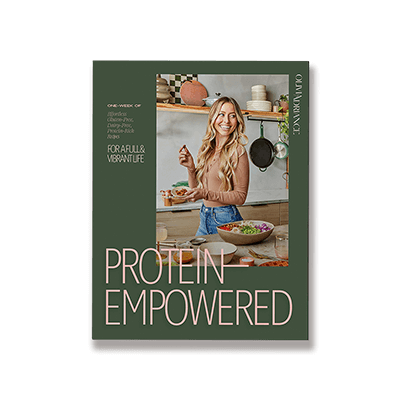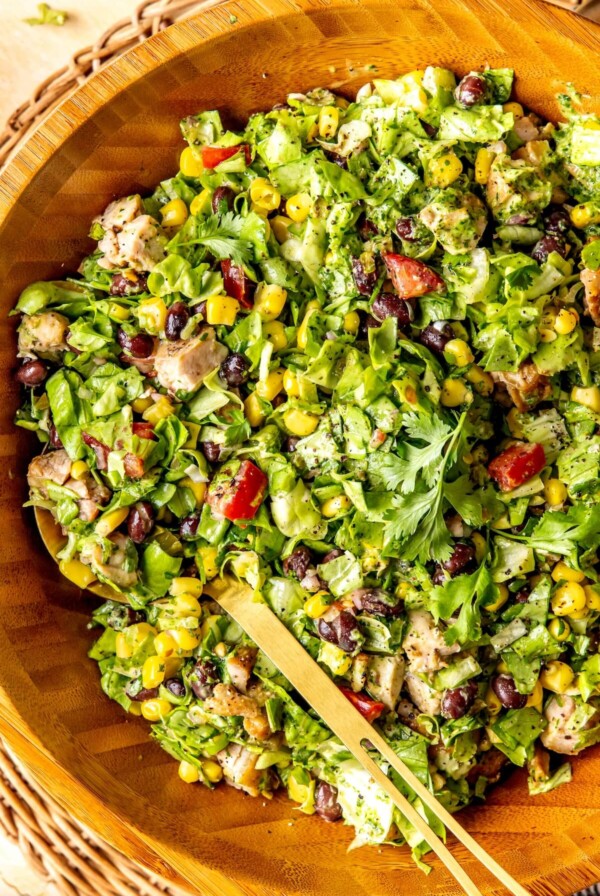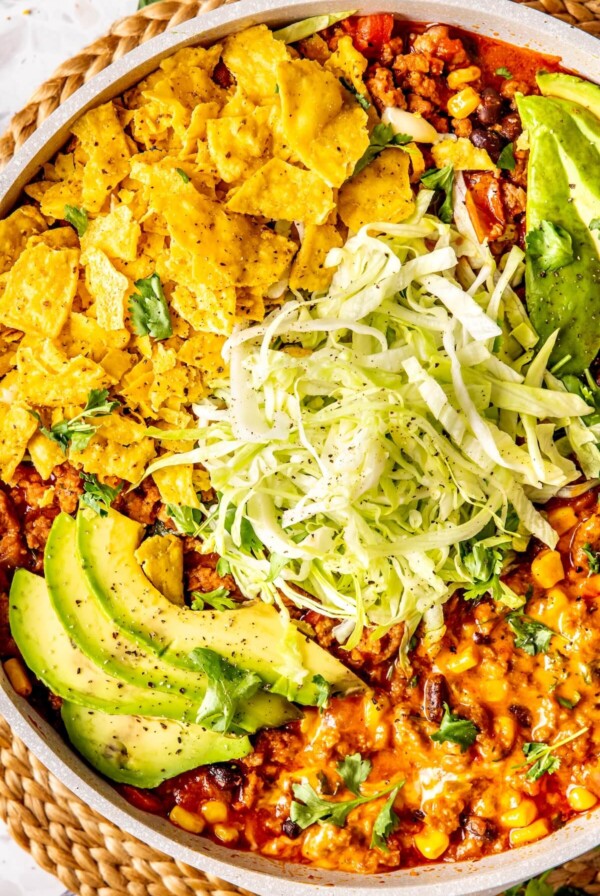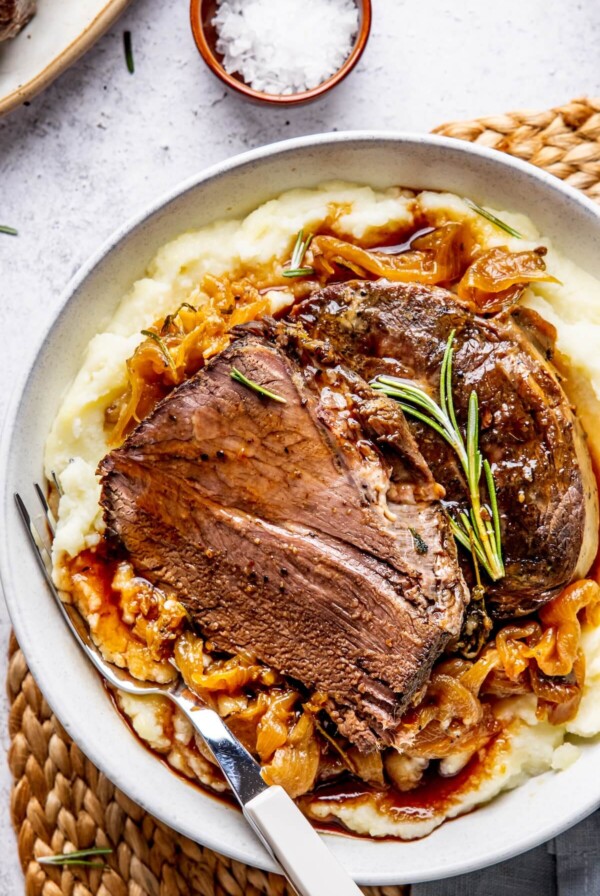ASIAN BRAISED PORK SHOULDER
on Feb 16, 2024, Updated Jul 23, 2024
This post may contain affiliate links. Please read our disclosure policy.
After seeing how many of you loved my Viral Chuck Roast, I wanted to create a similarly-styled recipe using another cut of meat. This Asian Braised Pork Shoulder uses the same easy, one-pan technique and turns out just as tender and delicious. A flavorful Asian-inspired sauce using coconut aminos, fish sauce, fresh ginger, and garlic really amps up the dish.
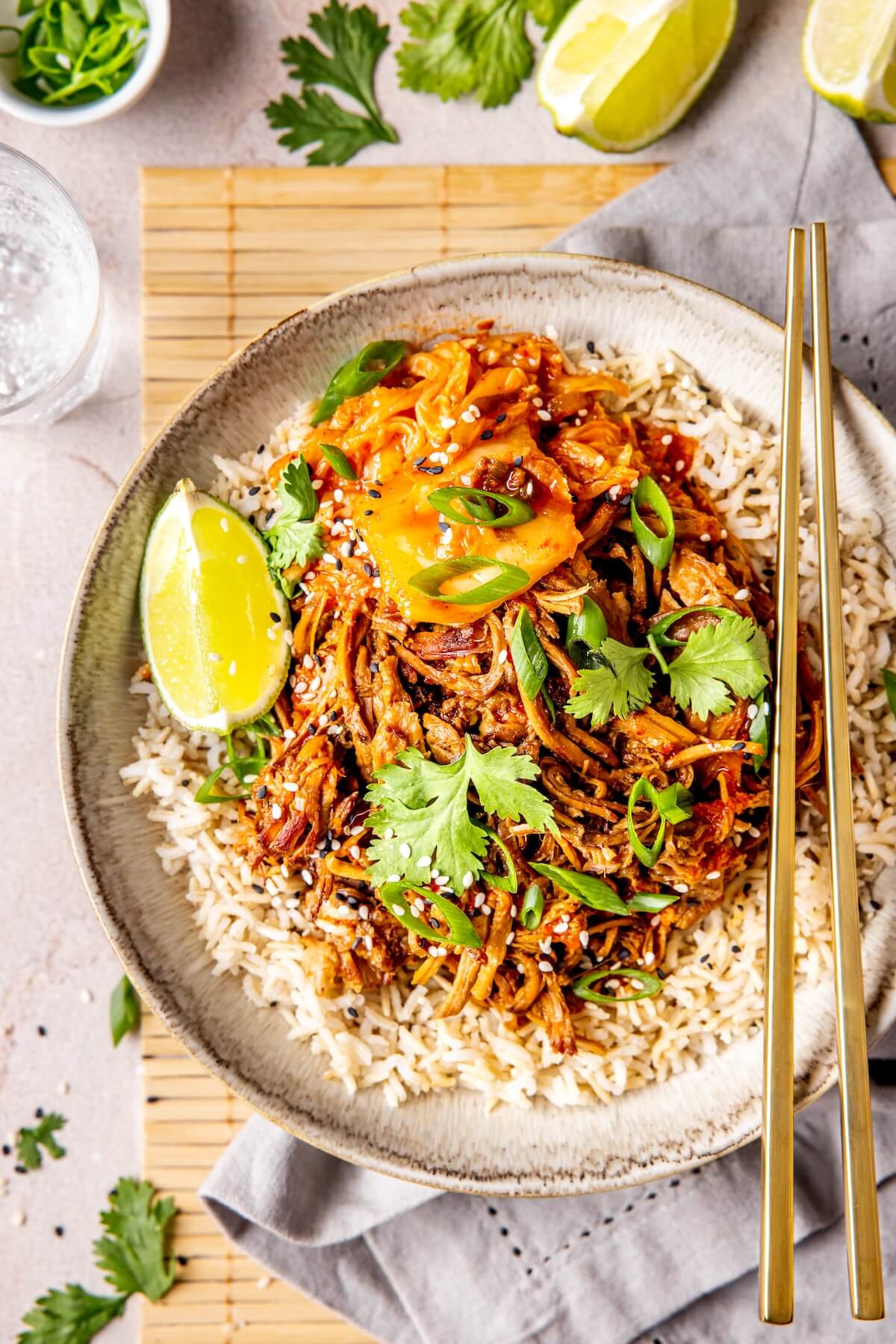
This recipe is on repeat at my house and is always a crowd-pleaser. Lay out a variety of toppings and let everyone build their own bowl for a fun, choose-your-own-adventure dinner party!
Whether you’ve tried my Viral Chuck Roast or not, give this quick and easy Asian braised pork a try. I promise it won’t disappoint!
Ingredients for Asian Pork Shoulder
PORK SHOULDER:
- Pork shoulder, either bone-in or boneless
- Salt
- Pepper
- Coconut aminos or tamari or soy sauce (see FAQs)
- Rice vinegar
- Coconut sugar
- Garlic
- Fresh ginger
- Fish sauce
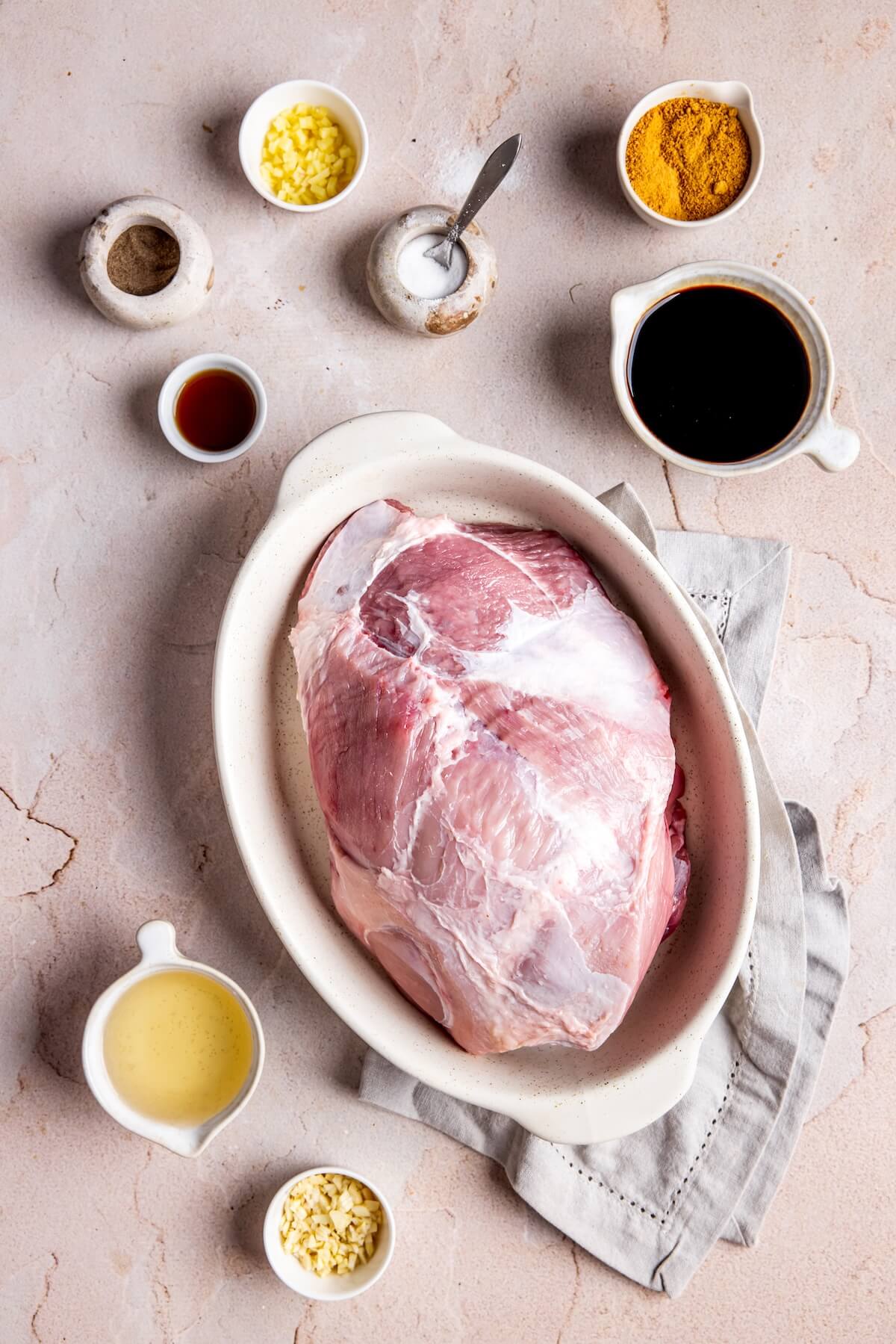
FOR SERVING:
- Rice
- Kimchi
- Cilantro
- Green onion
- Limes
- Chili oil
How to Make Asian Braised Pork
Preheat your oven to 325°F.
MAKE THE SAUCE:
In a small bowl or jar, whisk together the coconut aminos, rice vinegar, coconut sugar, garlic, ginger, and fish sauce.
PREPARE THE PORK:
Add the pork shoulder to a casserole dish (make sure it’s oven-safe) and season on both sides with salt and pepper. I like to leave the fattier side up as this keeps the pork from drying out. The fat will be continually basting the meat. Pour the sauce mixture over the pork.
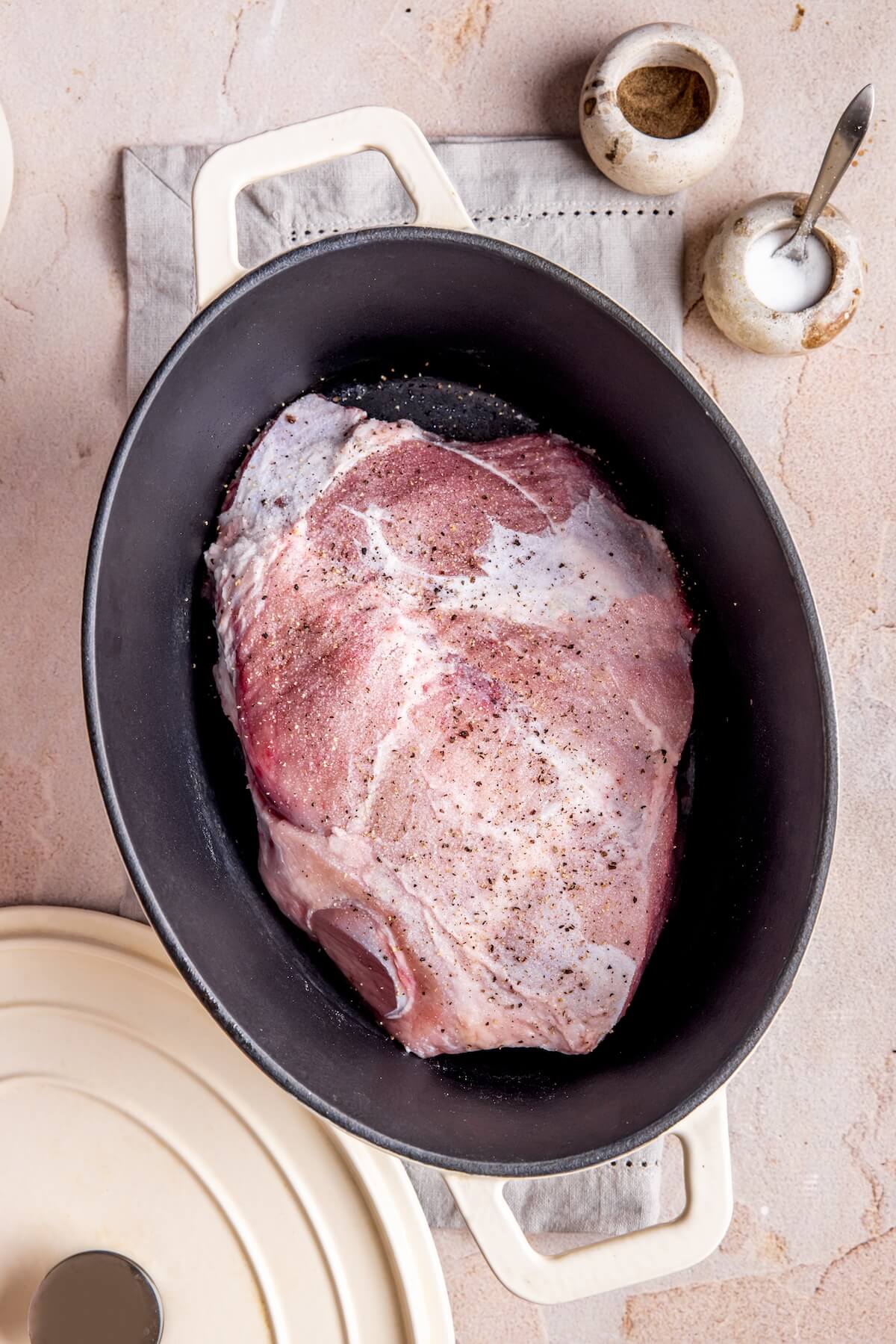
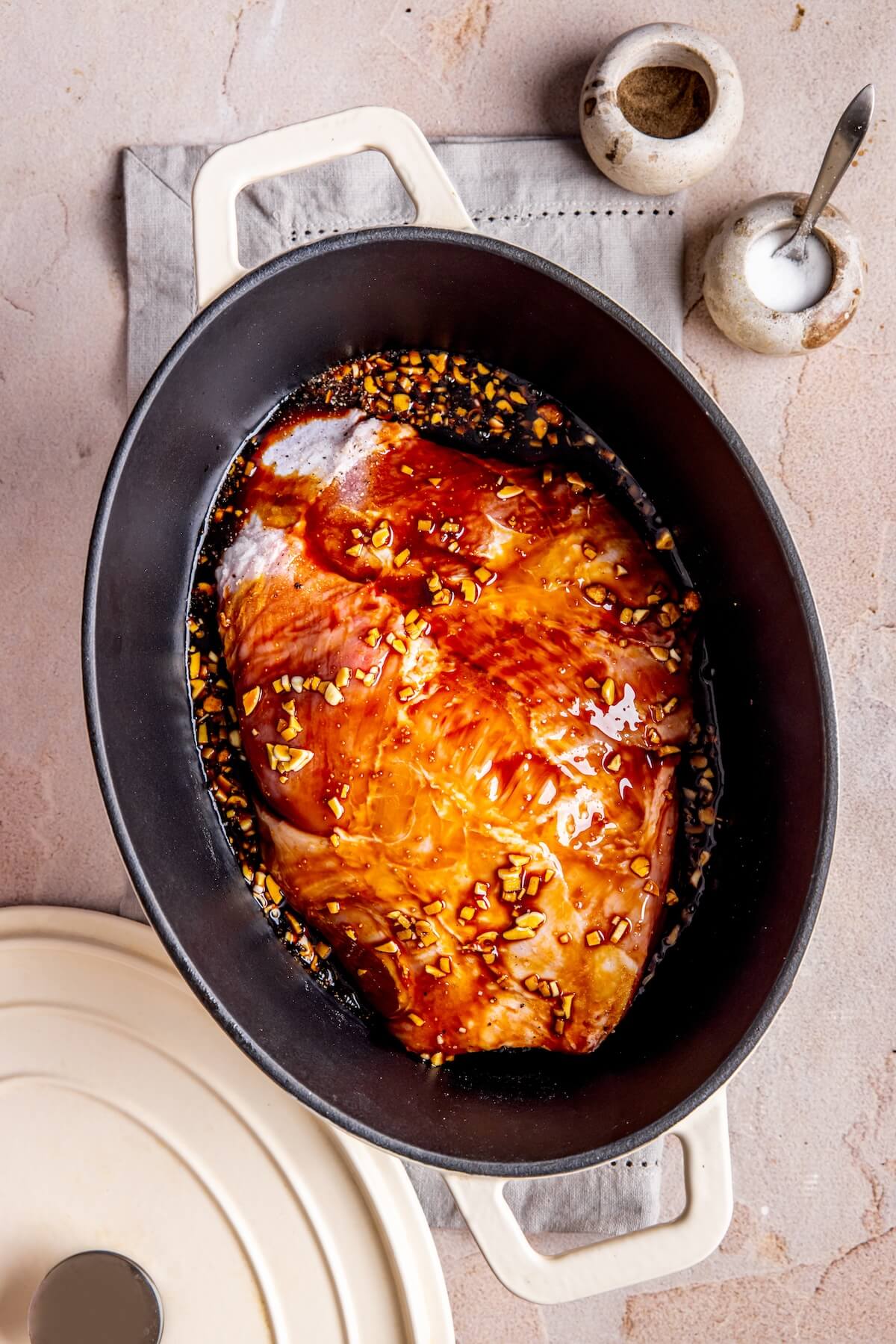
ROAST THE PORK:
Cover with a lid (or foil if your casserole pan or Dutch oven doesn’t have a lid) and roast for 4 hours, checking at 3 1/2 hours to see if the meat is tender and ready to shred.
Remove from the oven and increase the heat to 425°F. Shred the meat using two forks, tossing the meat in the rendered juices in the pan.
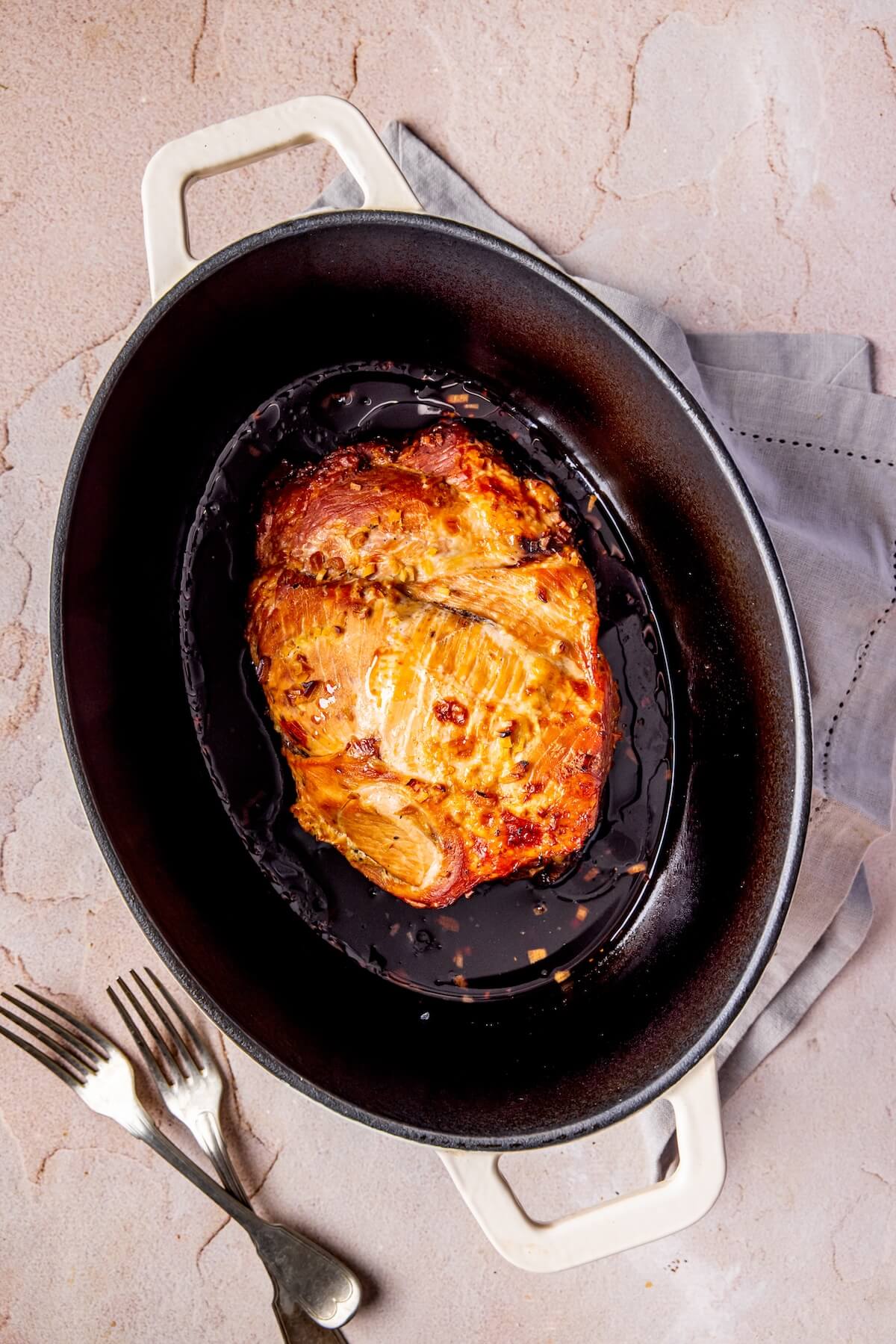
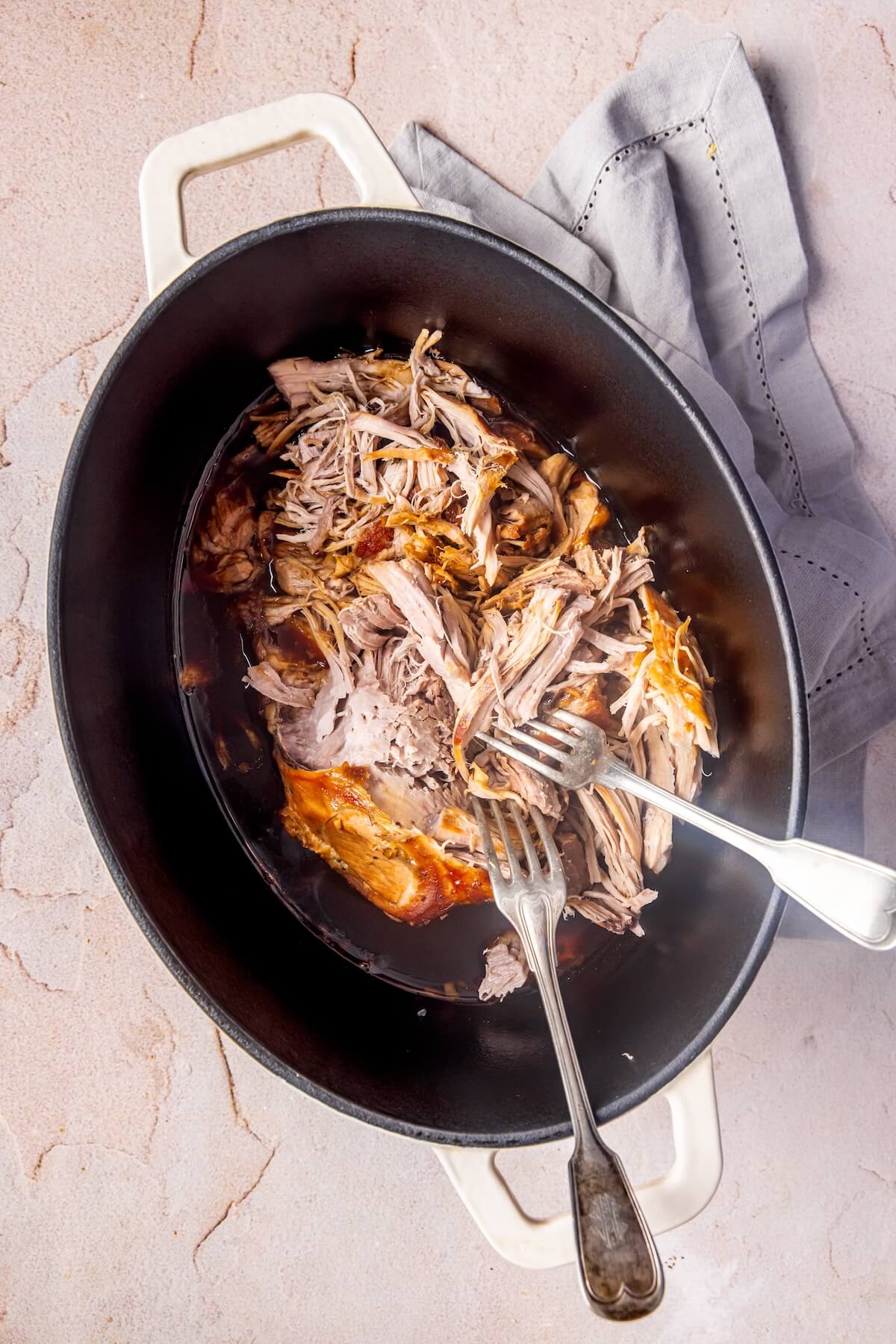
At this point, if the cut of meat is particularly fatty and there are a lot of fatty pieces or juices, I like to remove them using a ladle. You still want a good amount of juice in the pan, so leave about 1/2 inch for the meat to roast in.
Return the meat, uncovered to the oven and roast for an additional 20 minutes, or just until the ends are golden and brown but not dried out.
Pin this recipe for later!
Pin ItRemove from the oven and toss the meat in the juices once again. That’s where all the flavor is!
Serve over rice with kimchi, green onion, cilantro, lime juice, and a little chili oil.
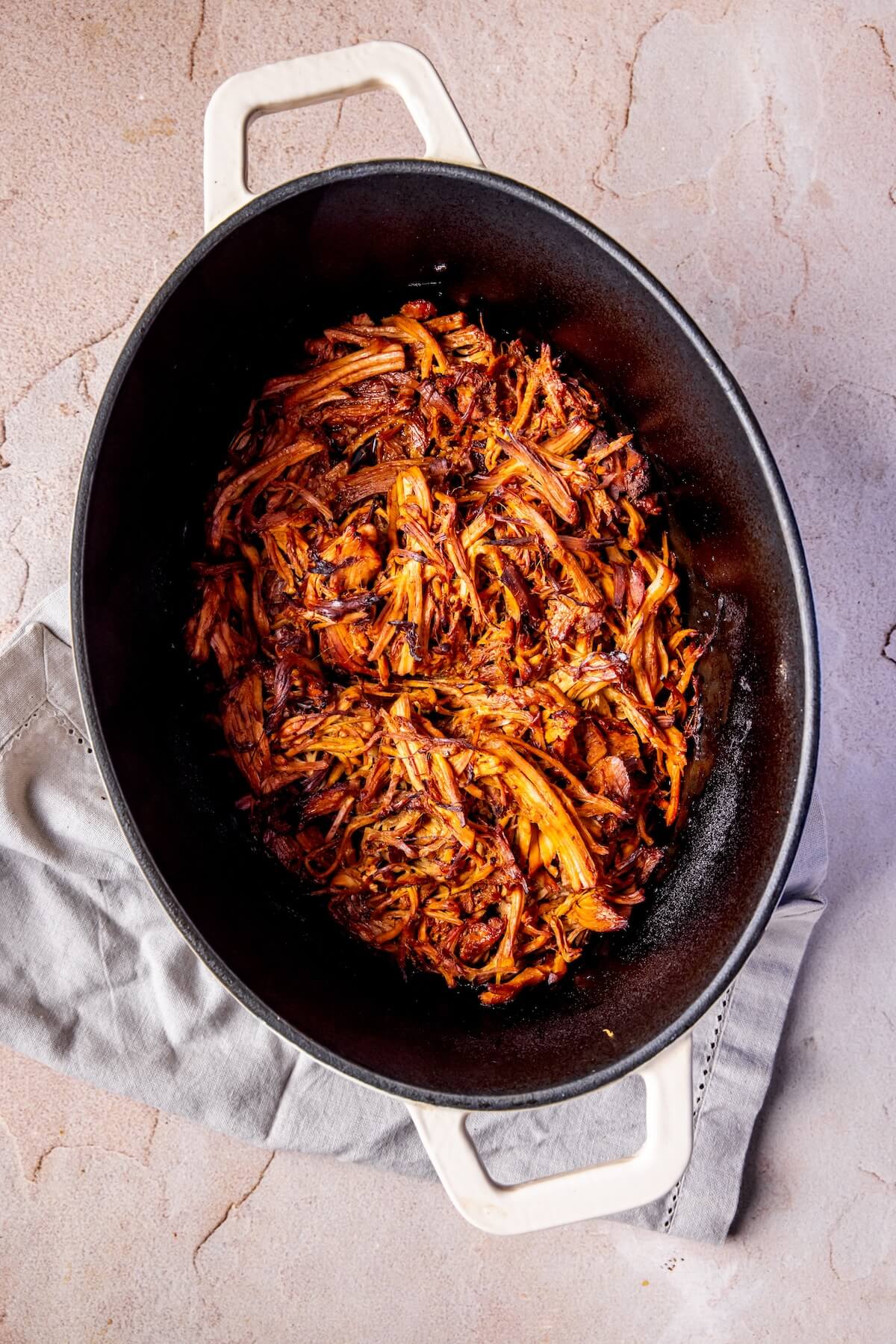
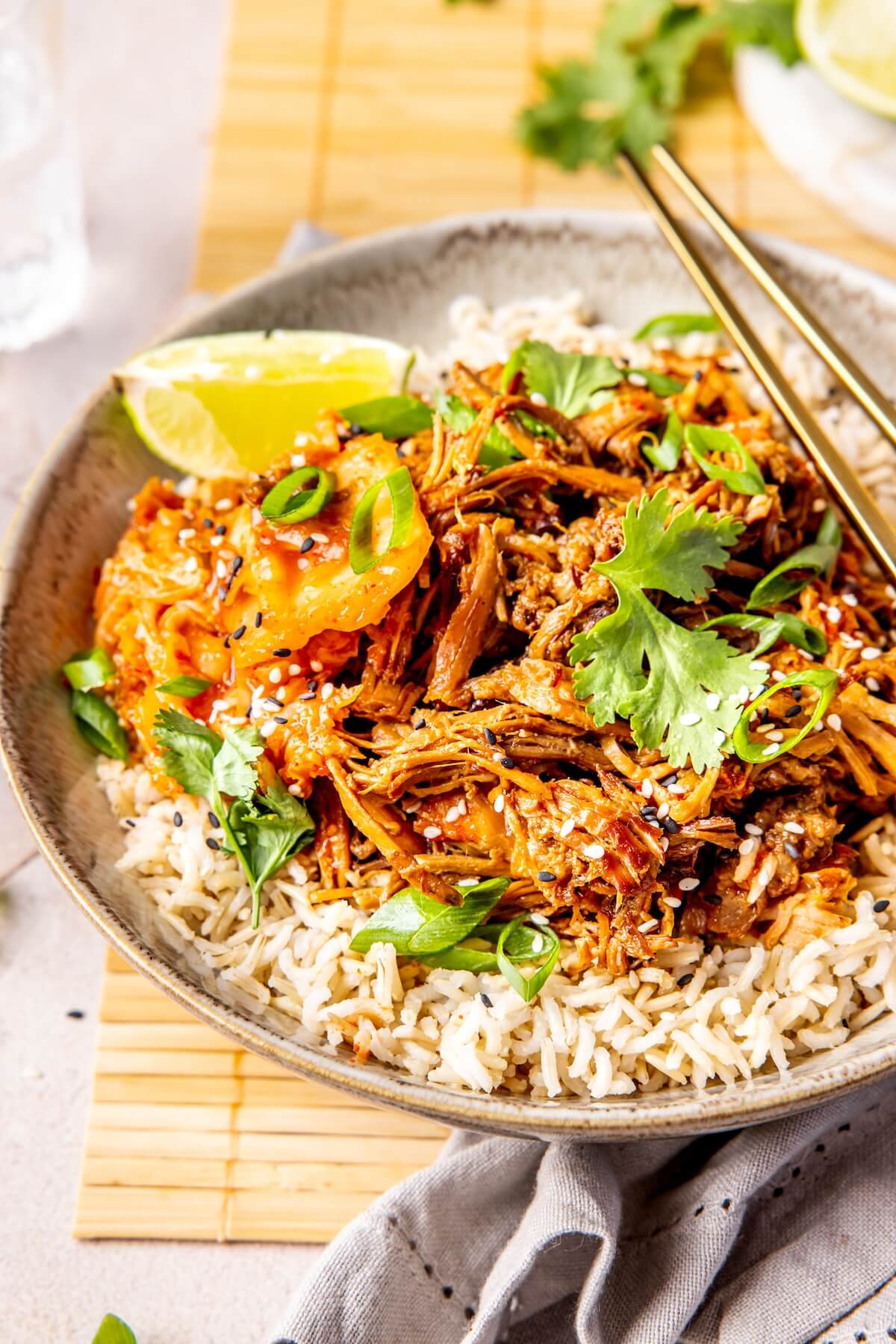
Recipe Substitutions and Frequently Asked Questions
When you’re looking at the pork section in the grocery store, you may come across both of these cuts of meat. Both come from the shoulder of the pig, and both are relatively fattier cuts, which is why they require a low and slow cooking temperature. This is also why the pork comes out so juicy and tender! Pork shoulder is sold bone-in or boneless, while a pork shoulder butt roast is typically sold bone-in. Either will work fine in this recipe.
I haven’t tried it with beef chuck, but I’m sure it would be delightful!
Yes! Tamari is a great substitute and most brands are gluten-free (check the label if this is important to you). Soy sauce, which is not gluten-free, is another option. If using either of these in place of coconut aminos, add 1/4 cup honey, and don’t salt your pork as generously. Coconut aminos are sweeter and less salty than either tamari or soy sauce.
Yes! I prefer coconut sugar because it is considered a more natural sweetener compared to brown sugar and white sugar. However, it’s fine to use if that’s all you have on hand.
For this recipe, I use my favorite Le Creuset Heritage Rectangular Casserole pan. A Dutch oven would work well here. You just need a pan with an oven-safe lid. If you don’t have one, seal the baking dish tightly with aluminum foil.
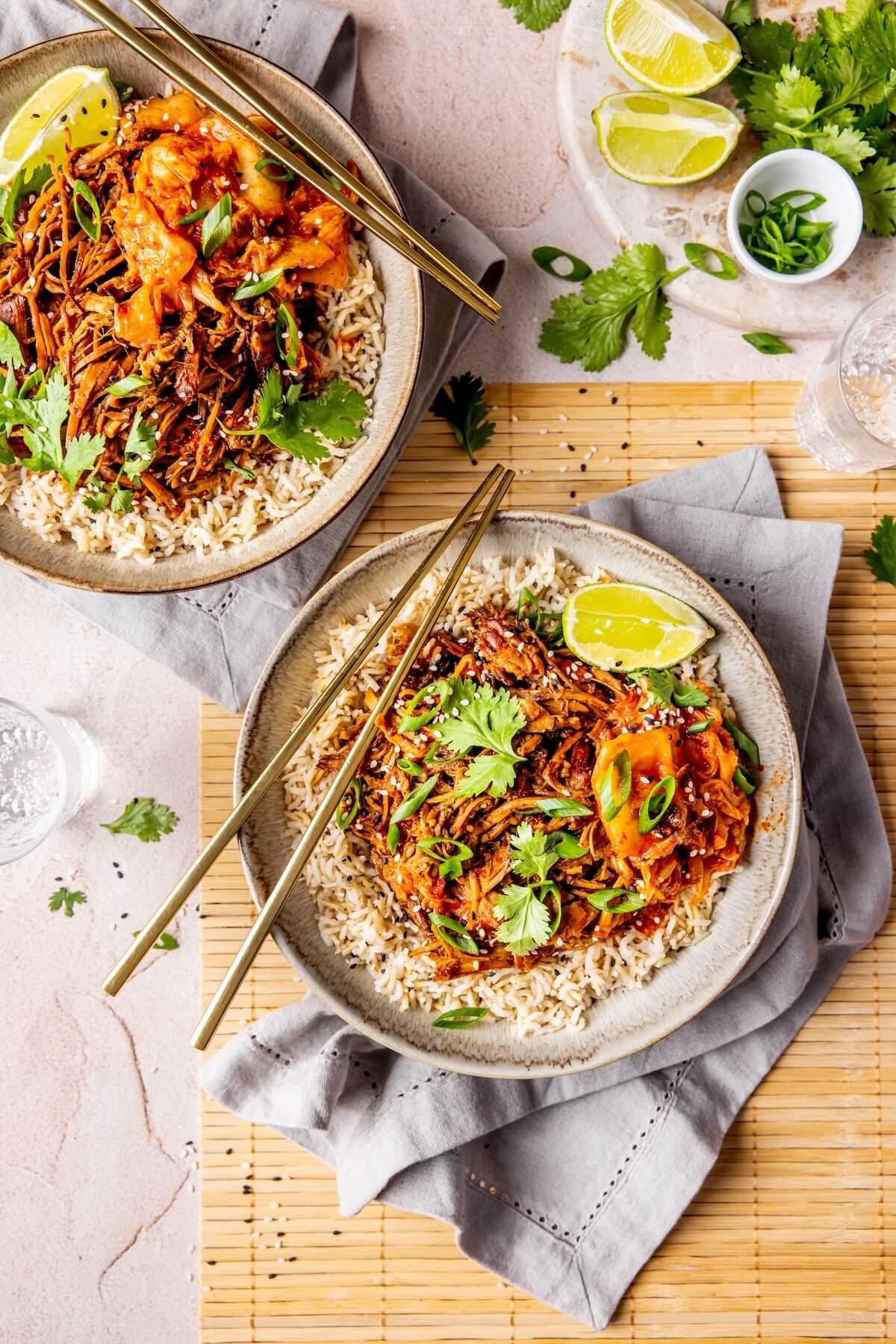
Other Braised Dinner Recipes You’ll Love
ASIAN BRAISED PORK SHOULDER
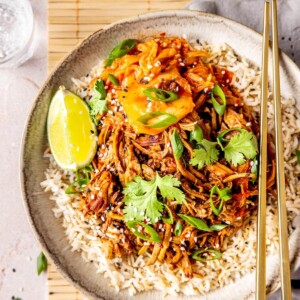
Ingredients
- 3-4 pounds pork shoulder, bone-in or boneless
- Salt and pepper to generously season
- ½ cup coconut aminos or tamari (see note)
- ¼ cup rice vinegar
- ¼ cup coconut sugar
- 3 cloves garlic, minced
- 2-inch knob ginger, minced
- 1 tablespoon fish sauce
For Serving
- Rice
- Kimchi
- Cilantro
- Green onions
- Limes
- Chili oil (optional)
Instructions
- Preheat your oven to 325°F.
- In a small jar or bowl, whisk together the coconut aminos, rice vinegar, coconut sugar, garlic, ginger, and fish sauce.
- Add the pork to a casserole dish and season on both sides with salt and pepper. I like to leave the fat side up as this keeps the pork from drying out).
- Pour the sauce mixture over the pork, cover with a lid (or foil if your dish doesn't have a lid), and roast in your preheated oven for 4 hours, checking at 3 ½ hours to see if the meat is tender and ready to shred.
- Remove from the oven and increase the heat to 425°F.
- Shred the meat using two forks, tossing the meat in the rendered juices. If you prefer, you can remove some of the fat. Just be sure to leave about ½-inch of juice for the meat to continue roasting in.
- Return the meat, uncovered, to the oven and roast for about 20 minutes until the ends are golden brown but not dried out.
- Remove from the oven and toss the meat in the juices once again.
- Serve over rice with kimchi, green onions, cilantro, lime juice, and a little chili oil.
- ENJOY!
